Vietnamese peanut sticky rice (“xôi đậu phộng” or “xôi lạc”) is among the most worth-trying dishes of Vietnamese food culture. Made mainly from sweet rice and peanuts, it makes for a simple yet filling breakfast and an addicting snack to munch on during the day.
If you’ve never tried this delicacy before, today’s post will bring you an easy recipe that anyone can create at home. Start your morning with this sweet, aromatic, and starchy treat once, and I’m sure you’ll soon crave more.
What Is Xôi Đậu Phộng
“Xôi” is a quintessential treat in Vietnamese cuisine. Simply speaking, this dish is glutinous rice (also known as sticky rice) cooked to perfection. Using their endless creativity, the Vietnamese have come up with plenty of delicious variations of this classic treat.
Among the many variations, xôi đậu phộng is one of the most well-loved ones. It has a signature stickiness from the glutinous rice and a charming flavor that’s a combination of sweet and salty. Moreover, the nuttiness of peanuts and the creaminess of coconut milk are the cherries on top that perfect this dish.
Traditionally, Vietnamese peanut sticky rice has a whitish color adorned with brown peanuts. Besides this original version, I’ll also show you how to make a green-colored variation that’s infused with the essence of pandan leaves.
Essential Kitchen Tools for Xôi Đậu Phộng Success
When it comes to cooking rice, it’s natural to think of using a rice cooker. While some Xôi recipes are made with this device, I recommend steaming the rice on a stovetop for the most authentic flavor.
Ingredients To Elevate Your Xôi Đậu Phộng
Glutinous rice and peanuts are the two most important ingredients in this recipe. Make sure that you select the correct rice type.
Xôi Đậu Phộng Perfection: A Step-by-Step Guide
Are you ready to make this delicious Vietnamese treat? Let’s gather the ingredients and start cooking.
Step 1: Prepare The Glutinous Rice
Soak the glutinous rice in warm water and stir well to clean the grains. Drain off the water once it turns cloudy.
Next, pour in cold water, stir, and drain off the water once again. Repeat this process about 4 to 5 times to thoroughly clean the rice grains.
After soaking and cleaning the rice, use a strainer to drain the glutinous rice. Then, spread it evenly across a flat winnowing basket or a tray. Wait for the rice to dry, about 30 to 40 minutes.
Note
You should let the rice dry completely so it can absorb the spices better.
Step 2: Cook The Peanuts
Boil the peanuts with 0.4 quarts (about 400 milliliters) of water for 45 to 60 minutes or until tender. You can adjust the cooking time so that the tenderness fits your liking.
Once cooked, remove the peanuts from the pot. Drain and wait for them to cool.
Step 3: Season The Rice
Separate the rice into 2 equal parts. You’ll use the first portion to make the original, plain version and the other to make the pandan-flavored variation. Likewise, divide the coconut milk into 2 shares, 0.25 quarts (about 250 milliliters) each.
For the plain sticky rice, pour 0.25 quarts of coconut milk, 1 teaspoon of salt, and 1 tablespoon of sugar into the rice. Mix well and set aside.
Repeat the first step for the pandan-flavored variation. Then, stir in the pandan leaf extract. Mix well and set aside.
Step 4: Stir-Fry The Rice
For the plain version, pour the prepared rice into a large pan and stir-fry over medium heat until the grains have fully absorbed the coconut rice.
Once the rice is sticky and fragrant, add half of the boiled peanuts to the pan. Continue stirring to mix the peanuts with the rice.
Repeat the above steps for the pandan-flavored version. However, you’ll need to cook the glutinous rice for 2 to 3 minutes more.
Step 5: Steam The Rice
Pour water into a steamer pot and set it on the stovetop. Spread a thin layer of pandan leaves on the steamer basket. Place the glutinous rice and peanuts mixture onto the basket. Arrange the pandan-flavored rice on one side of the basket and the plain rice on the other half.
Cover the pot and steam the rice for about 20 minutes over low heat. After 20 minutes, open the lid to check the rice. If the grains are clear and slightly tender, stir them using a pair of chopsticks or a spatula.
Close the lid and continue steaming for another 10 minutes to infuse the rice with the spices thoroughly.
Step 6: Make The Topping With Roasted Peanuts, Sesame, And Salt
Roast the sesame seeds in a pan over medium heat until they turn slightly golden. This process usually takes about 3 minutes.
Crush the roasted peanuts (they don’t need to be too fine). Add 1 tablespoon of sugar and 1 teaspoon of salt. Mix all ingredients well.
Step 7: Finish The Dish
When the sticky rice is fully cooked, open the lid, and scoop it out onto a plate. You can also use a mold to shape the rice into an eye-catching form or roll it into beautiful rice balls. Sprinkle your delicious sticky rice with the sesame and salt topping, and enjoy!
Extra Notes For The Best-Tasting Xôi Đậu Phộng
Here are a couple of handy notes to help you have a better cooking experience. You can also make some small changes to the recipe to have a slightly different result.
Handy Suggestions For Serving And Storing
While xôi đậu phộng tastes great on its own, it will be extra delicious when paired with salted shredded pork (chà bông), Vietnamese pork bologna (chả lụa), or Chinese sausage (lạp xưởng). If you have a sweet tooth, try serving the sticky rice with a mixture of grated coconut and sugar.
For storing leftover sticky rice, place it in a container and refrigerate for up to a week or freeze it for up to 4 months. As for the remaining sesame and salt topping, you can store it in an airtight container at room temperature.
Due to the nature of sticky rice, the dish will get harder and drier the longer you store it. So it’s best that you consume the rice as soon as possible and microwave it for about 1 minute before serving.
Start Your Day With This Vietnamese Delight
Xôi đậu phộng, a delicious blend of sticky rice, peanuts, and coconut milk, is one of the cherished Vietnamese staples. It’s a simple yet flavorful dish that holds a special place in the hearts of many.
With our easy guide, you’re now ready to cook this delightful treat. Don’t be afraid to experiment and make it your own! Whether you enjoy it for breakfast, a snack, or dessert, xôi đậu phộng is sure to satisfy.
What are your thoughts on this Vietnamese delicacy? Is your family loving it and asking for more? I bet that they are! If you enjoy today’s recipe, please leave a comment and press the like button. Plus, it would be great if you could share this post with others as well!
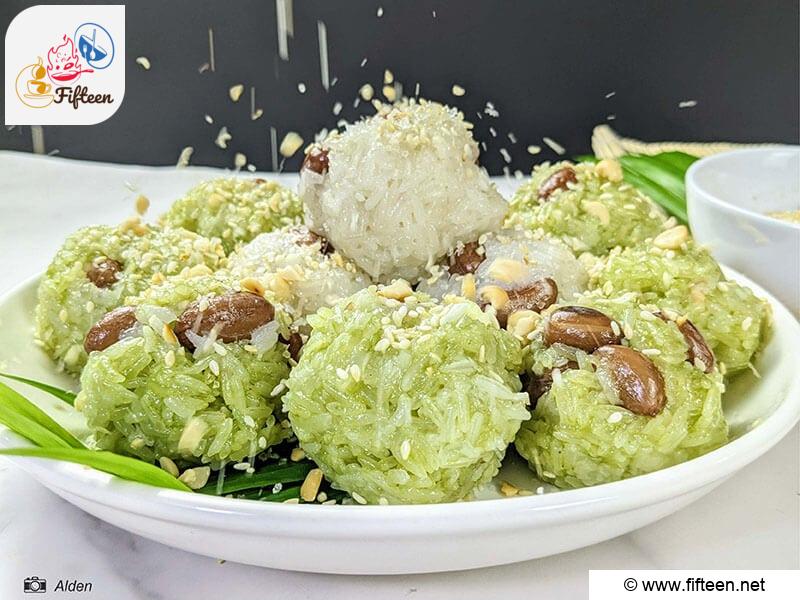
Xôi Đậu Phộng Recipe (Vietnamese Peanut Sticky Rice)
Equipment
- Steamer pot
- Pot
- Large bowl
- Mortar and pestle
- Sieve
- Pan
- Spatula (optional, you can use chopsticks)
- Large spoon
Ingredients
For the sticky rice
- 3.3 pounds glutinous rice
- 0.88 pounds raw peanuts
- 17 ounces coconut milk
- 6.8 ounces pandan leaf extract
- 2 quarts hot water
- 0.17 ounces pandan leaves
- 2 teaspoons salt
- 2 tablespoons sugar
- Cold water
For the sesame and salt topping
- 0.22 pounds roasted peanuts
- 0.17 pounds white sesame seeds
- 1 tablespoon sugar
- 1 teaspoon salt
Instructions
- Soak the glutinous rice in warm water and stir well to clean the grains. Drain off the water once it turns cloudy.
- Next, pour in cold water, stir, and drain off the water once again. Repeat this process about 4 to 5 times.
- Use a strainer to drain the glutinous rice. Then, spread it evenly across a flat winnowing basket or a tray to dry (about 30 to 40 minutes).
- Boil the peanuts for 45 to 60 minutes or until tender. Once cooked, remove the peanuts from the pot. Drain and wait for them to cool.
- Divide the rice and coconut milk equally into 2 parts. Combine half the rice with half the coconut milk, salt, and sugar. Mix well and set aside for the plain version.
- Do the same thing for the other half of the rice. Then, stir in the pandan leaf extract. Mix well and set aside.
- For the plain version, pour the prepared rice into a large pan and stir-fry over medium heat until the grains have fully absorbed the coconut rice.
- Once the rice is sticky and fragrant, add half of the boiled peanuts to the pan. Continue stirring to mix the peanuts with the rice.
- Repeat the above steps for the pandan-flavored version. However, you’ll need to cook the glutinous rice for 2 to 3 minutes more.
- Pour water into a steamer pot and set it on the stovetop. Spread a thin layer of pandan leaves on the steamer basket and place the glutinous rice and peanuts mixture onto the basket.
- Cover the pot and steam the rice for about 20 minutes over low heat. When rice is slightly tender, stir with chopsticks and steam for 10 more minutes.
- Roast the sesame seeds in a pan over medium heat for 3 minutes or until they turn slightly golden.
- Crush the roasted peanuts coarsely and mix them with sesame seeds, sugar, and salt.
- Scoop the rice out and sprinkle the sesame and salt topping on top. Enjoy!
Video
Notes
- The total cooking time is based on 18 servings.
- Besides pandan leaf extract, you can also use magenta plant leaves or butterfly pea flowers to change the color of the rice.
- If you have a sweet tooth, try serving the sticky rice with a mixture of grated coconut and sugar.
- Pair the sticky rice with salted shredded pork (chà bông), Vietnamese pork bologna (chả lụa), or Chinese sausage (lạp xưởng) for a savory dish.
- Soaking the glutinous rice in boiled or hot water helps remove the dirt and ensures a smooth cooking experience and tender rice grains.
- Don’t add too many peanuts or too much water.


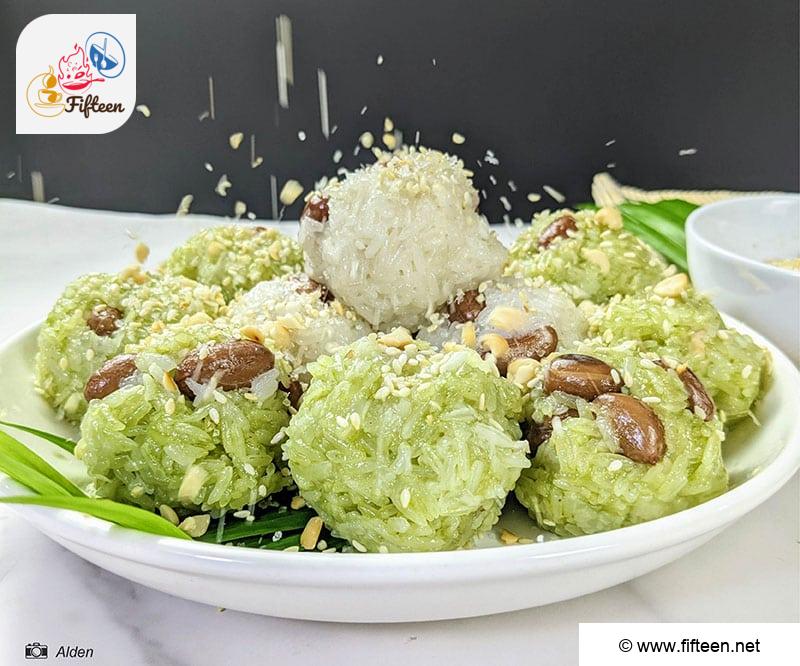
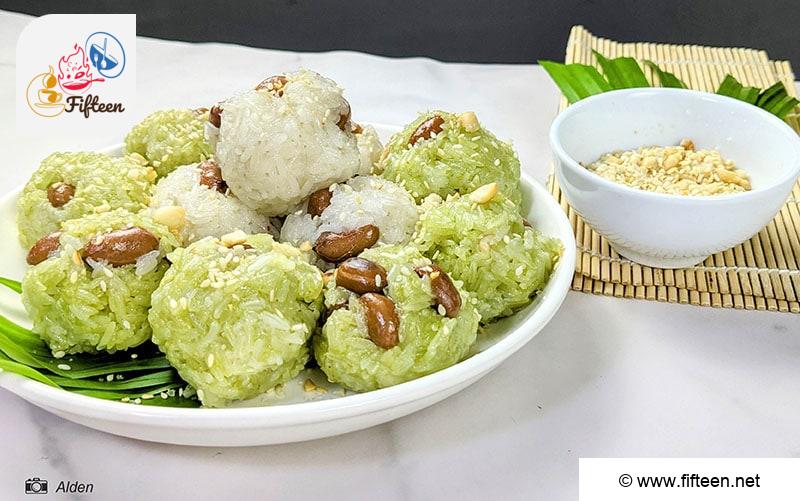
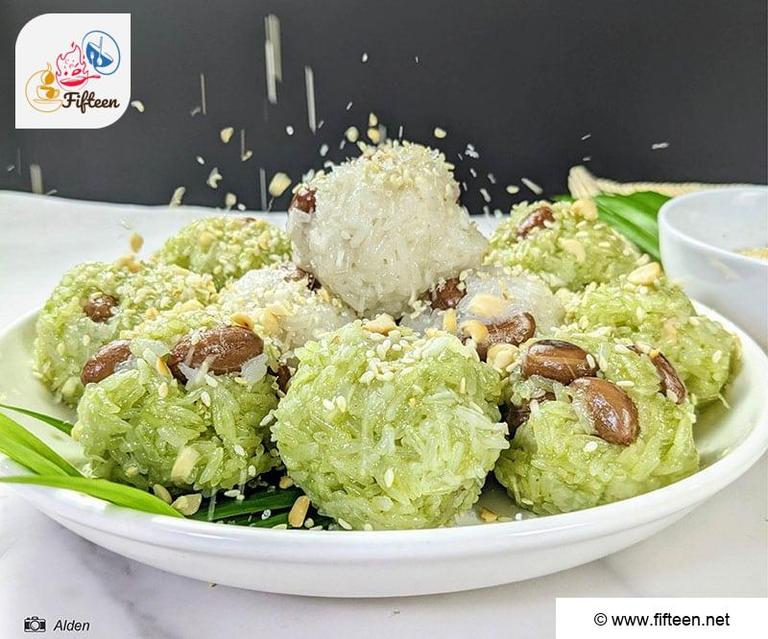
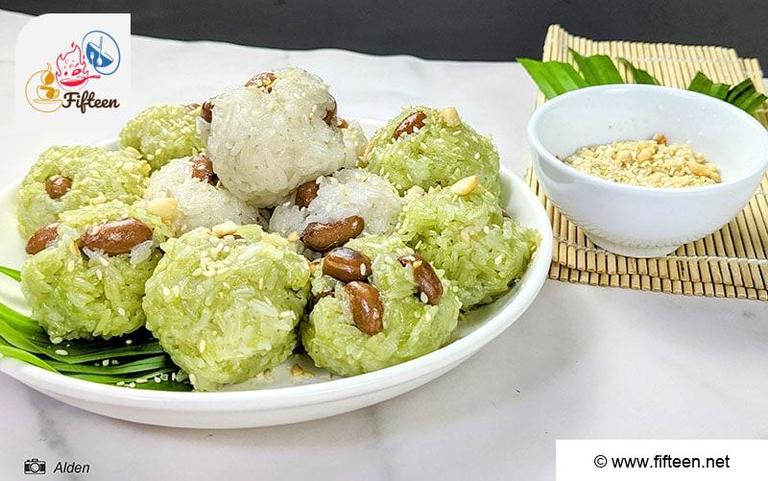
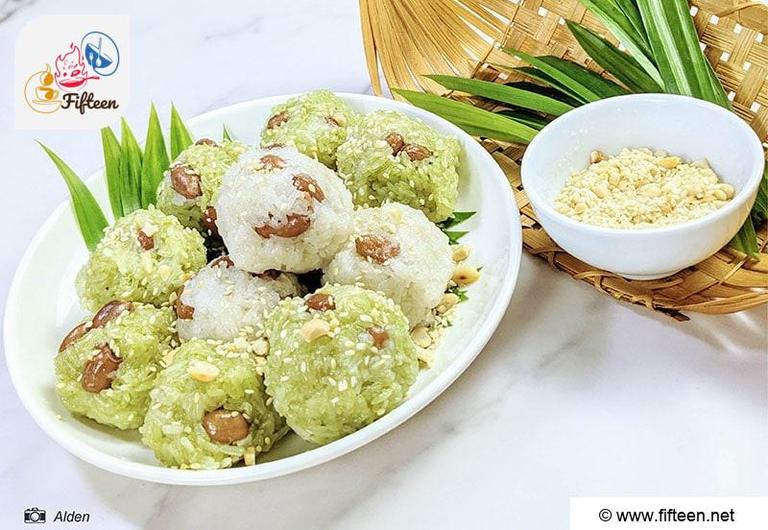
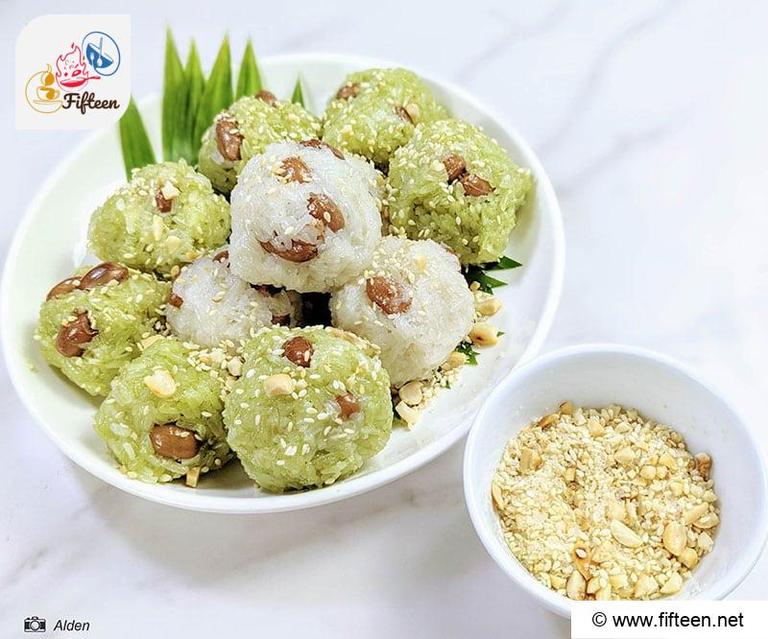
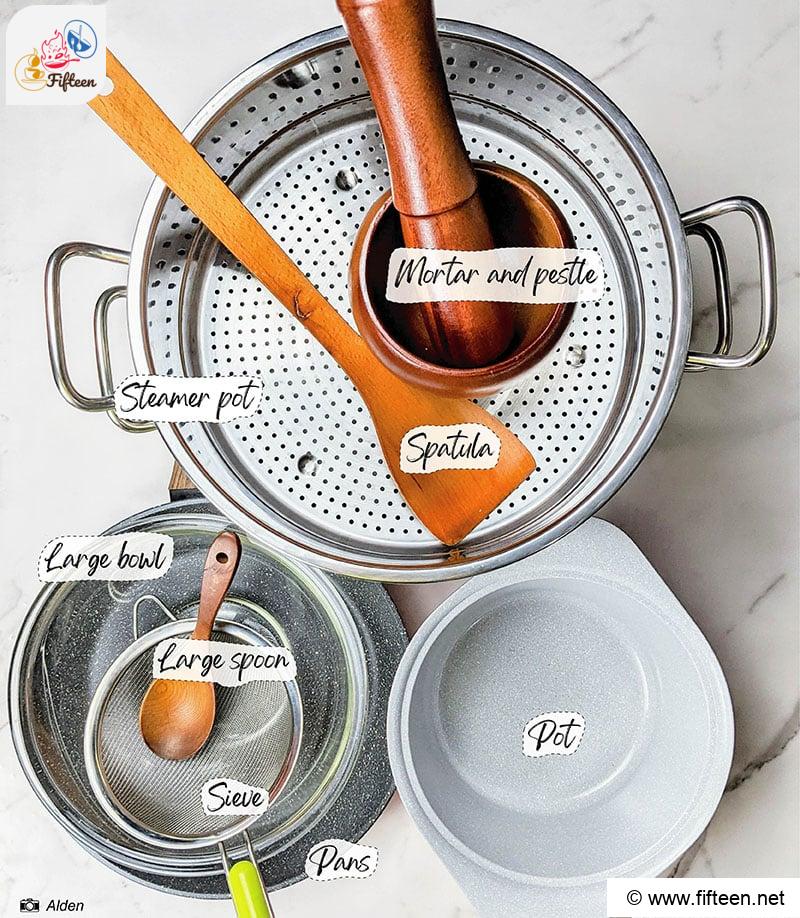
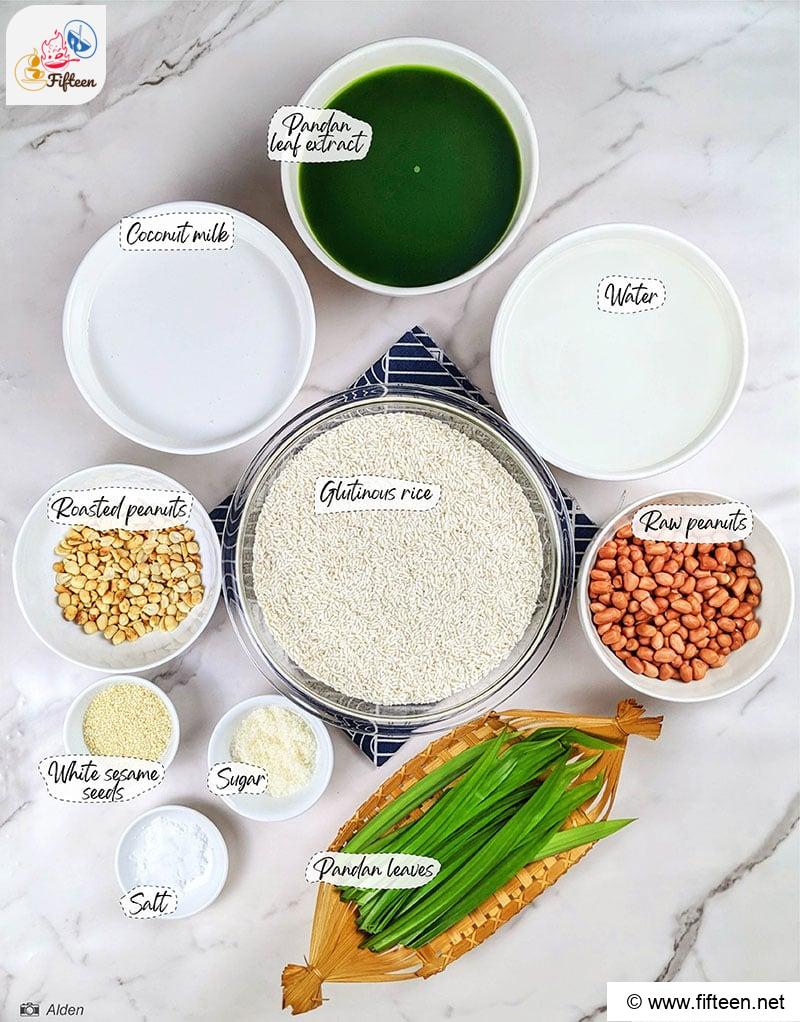
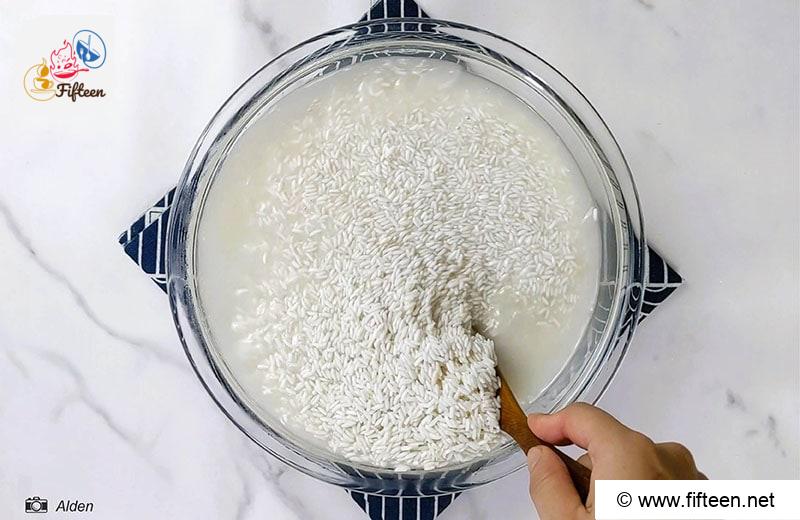
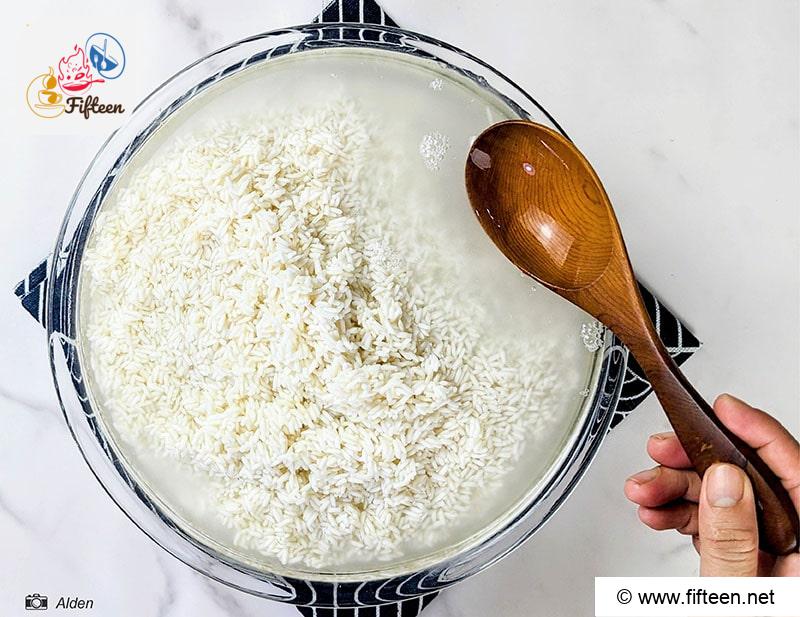
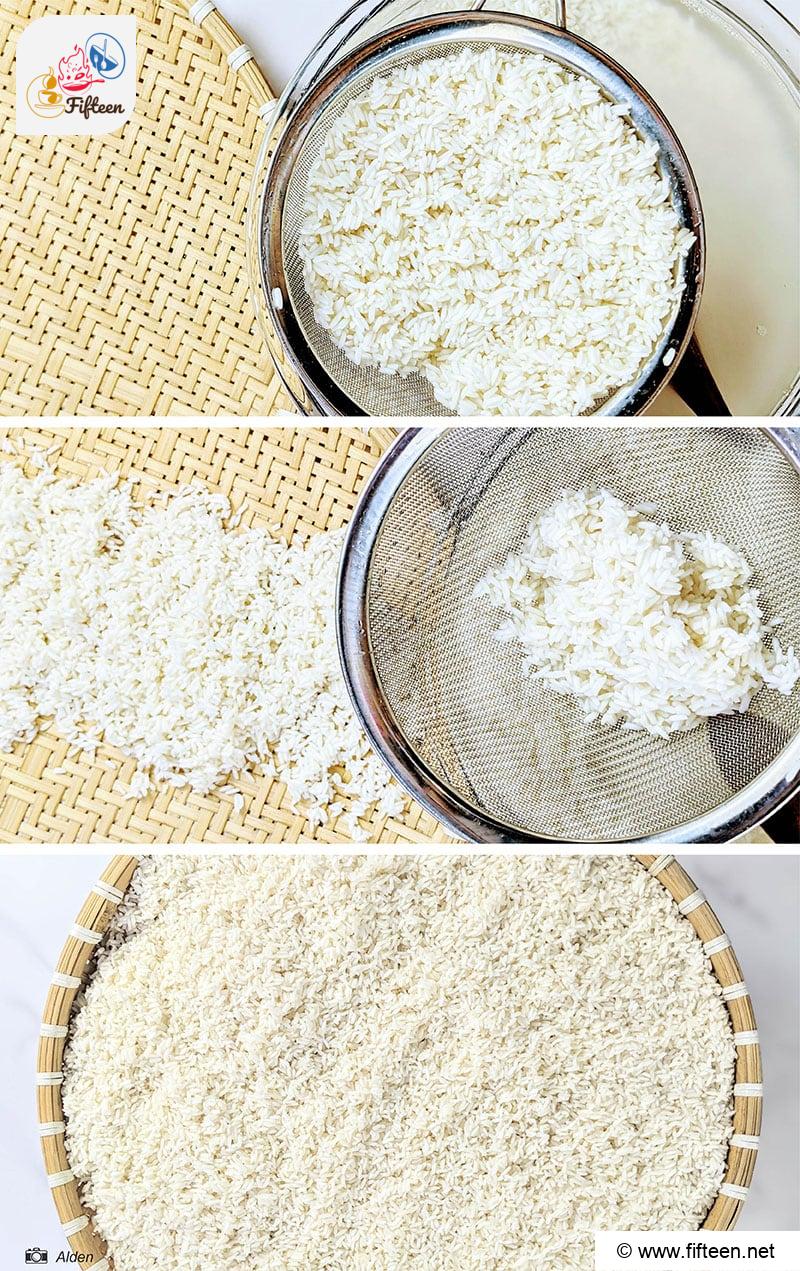
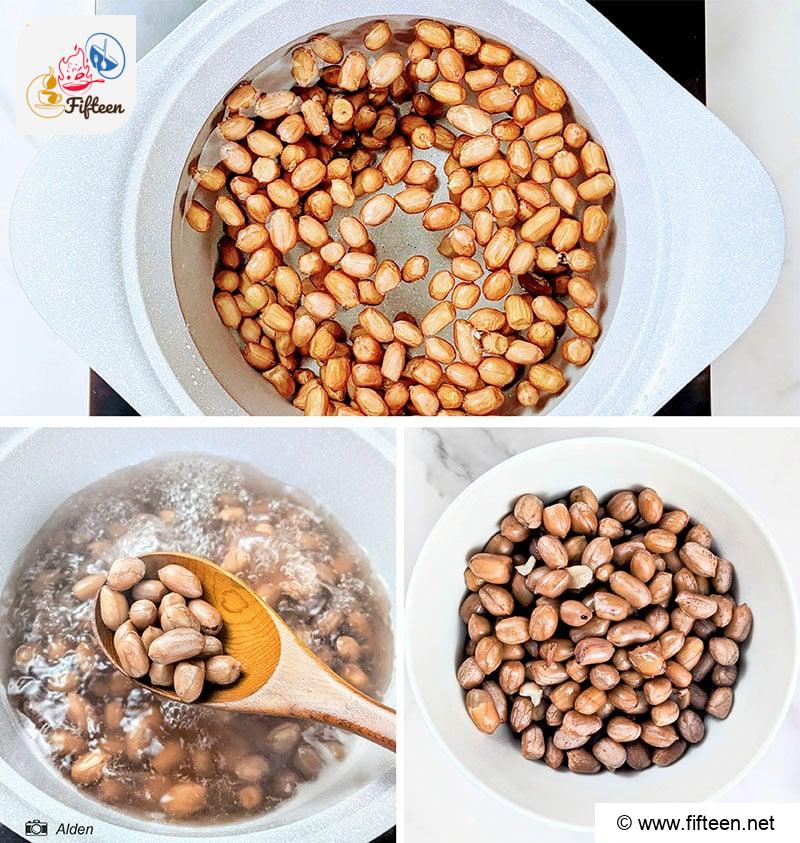
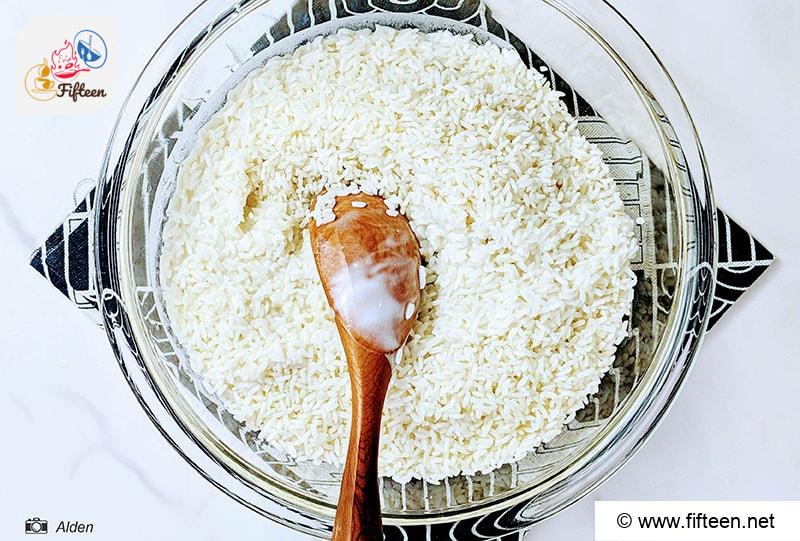
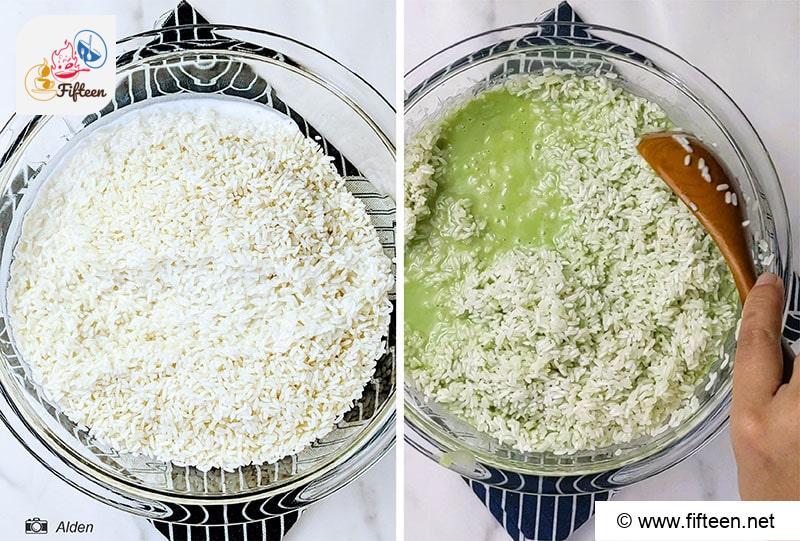
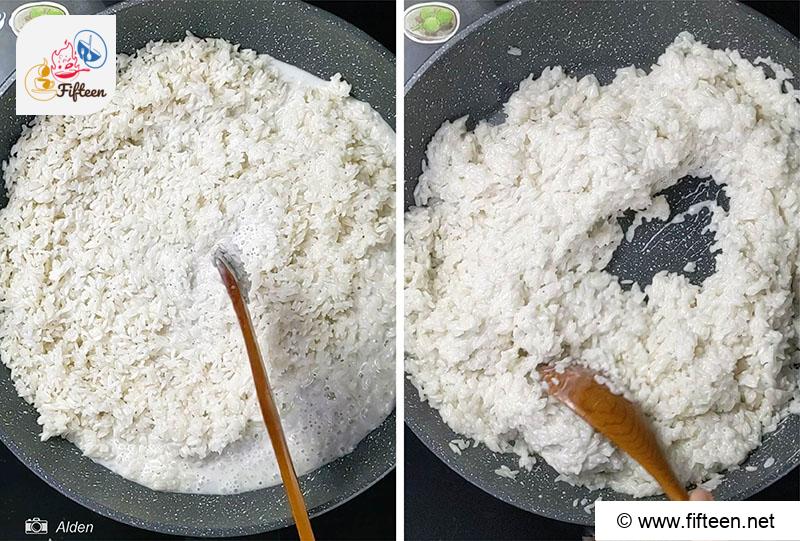
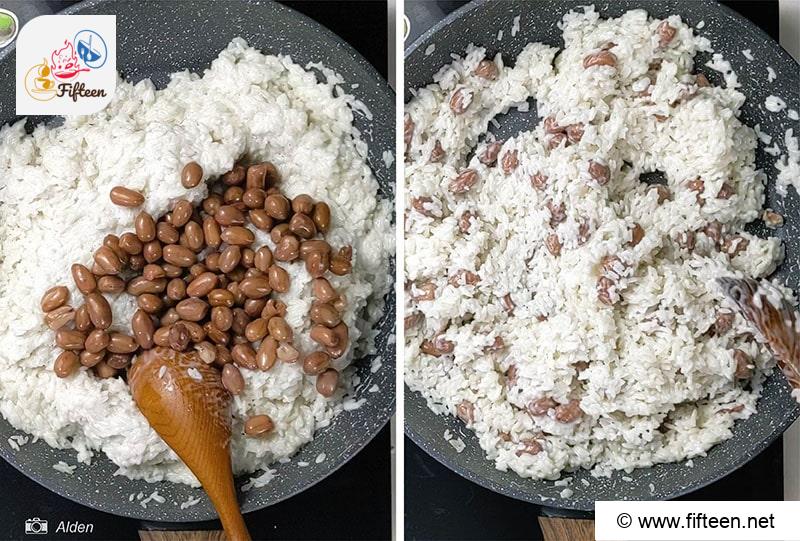
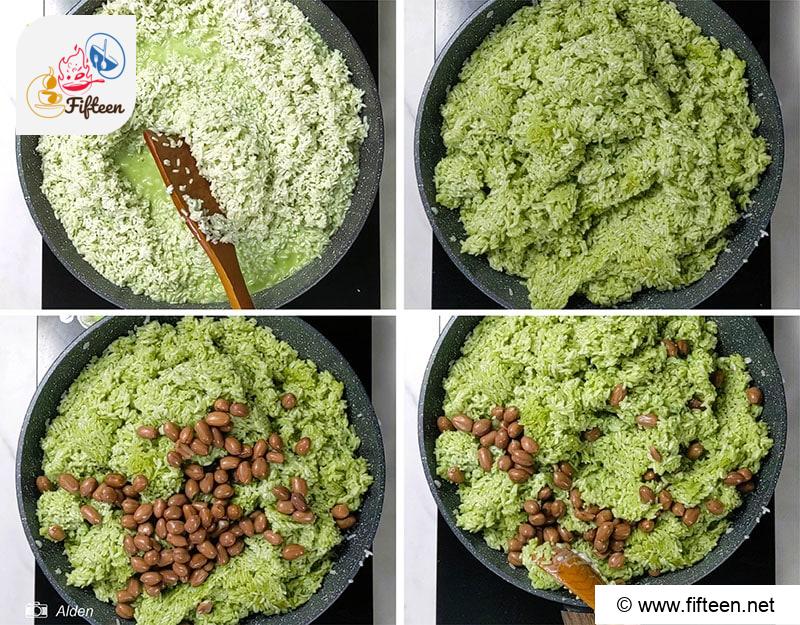
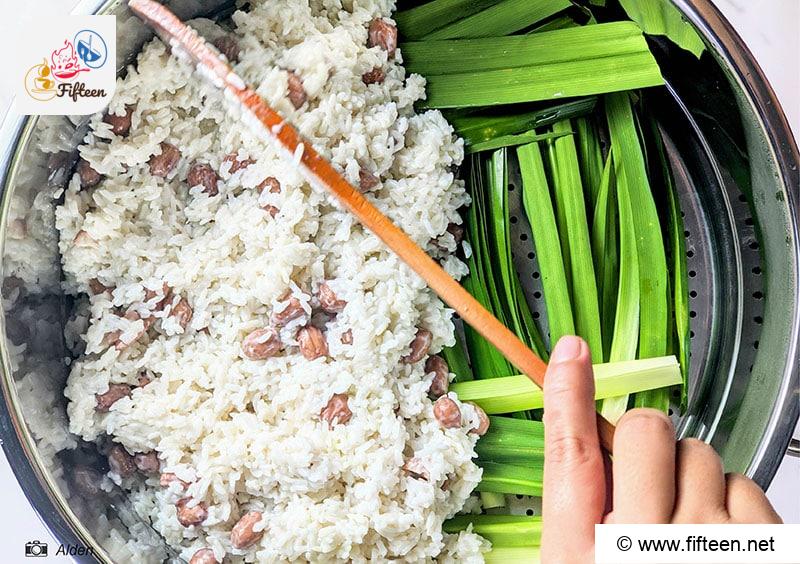
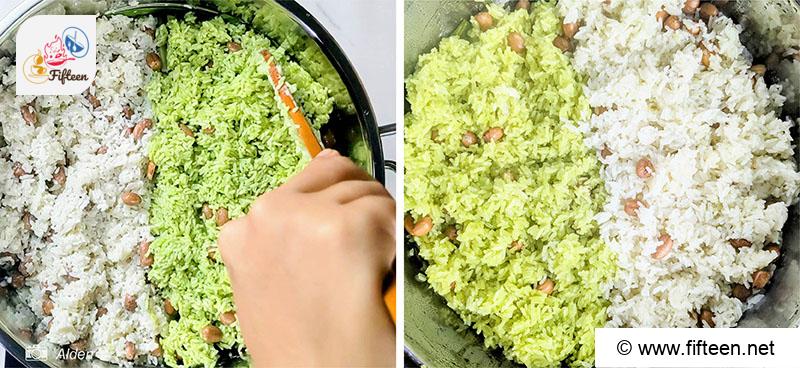
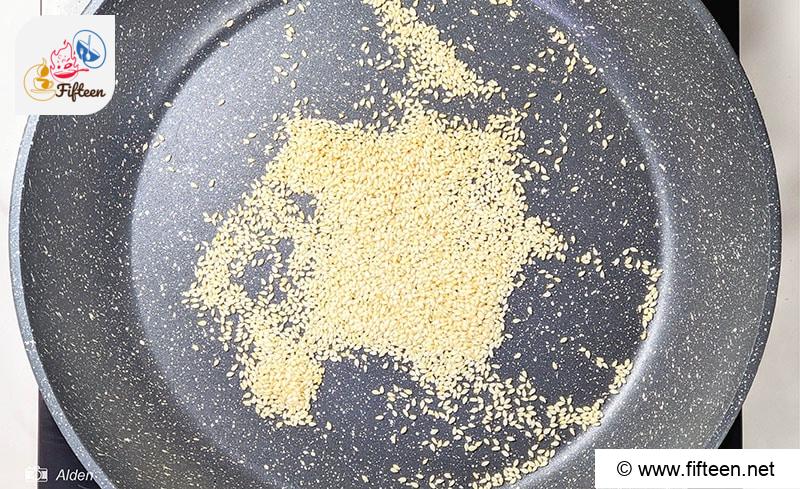
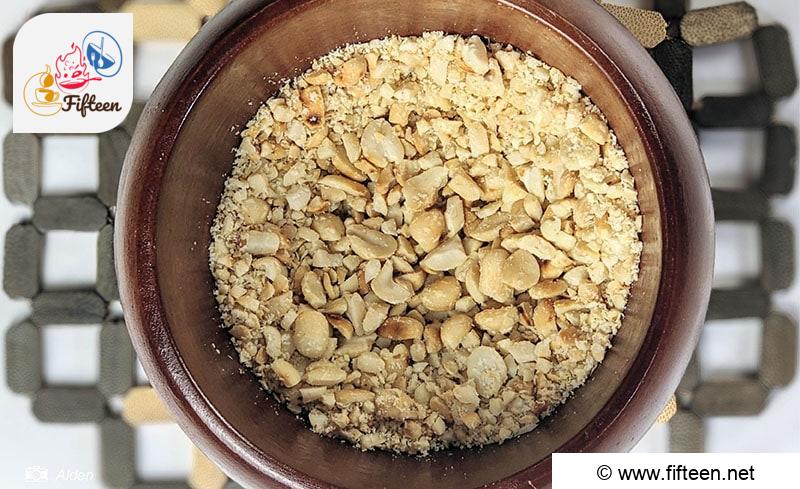
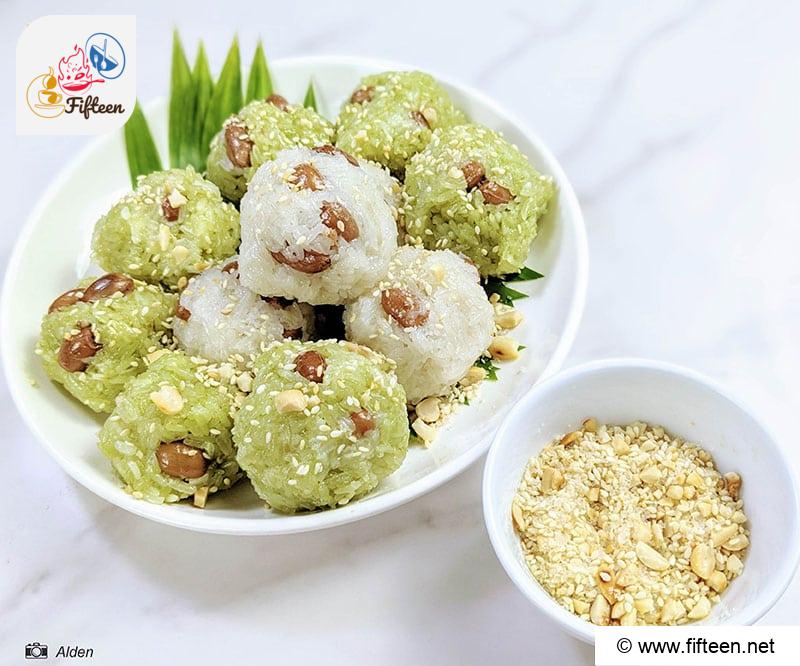
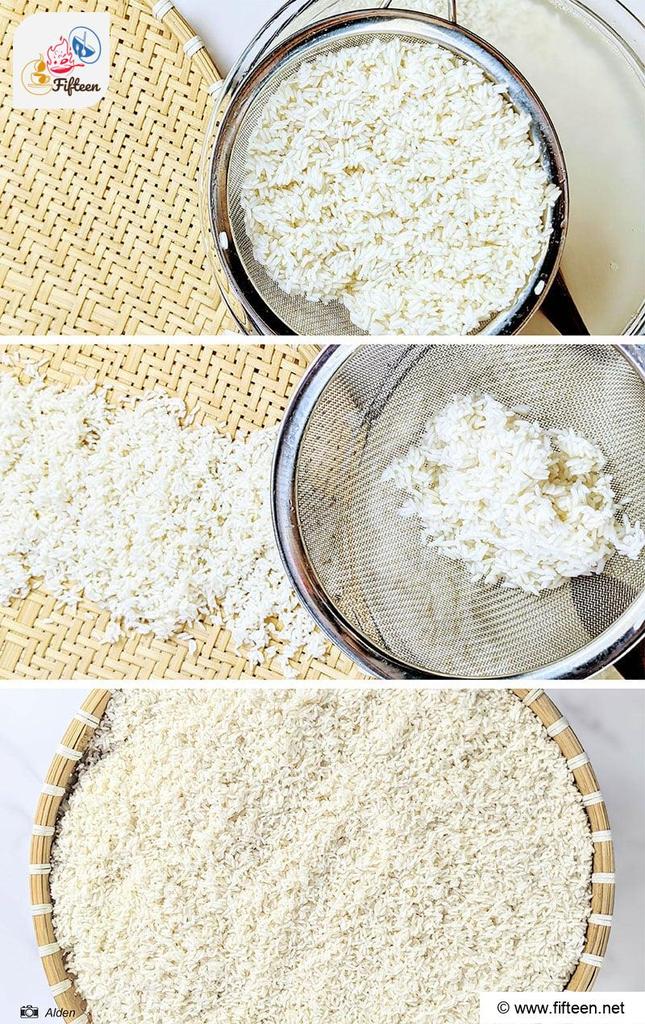
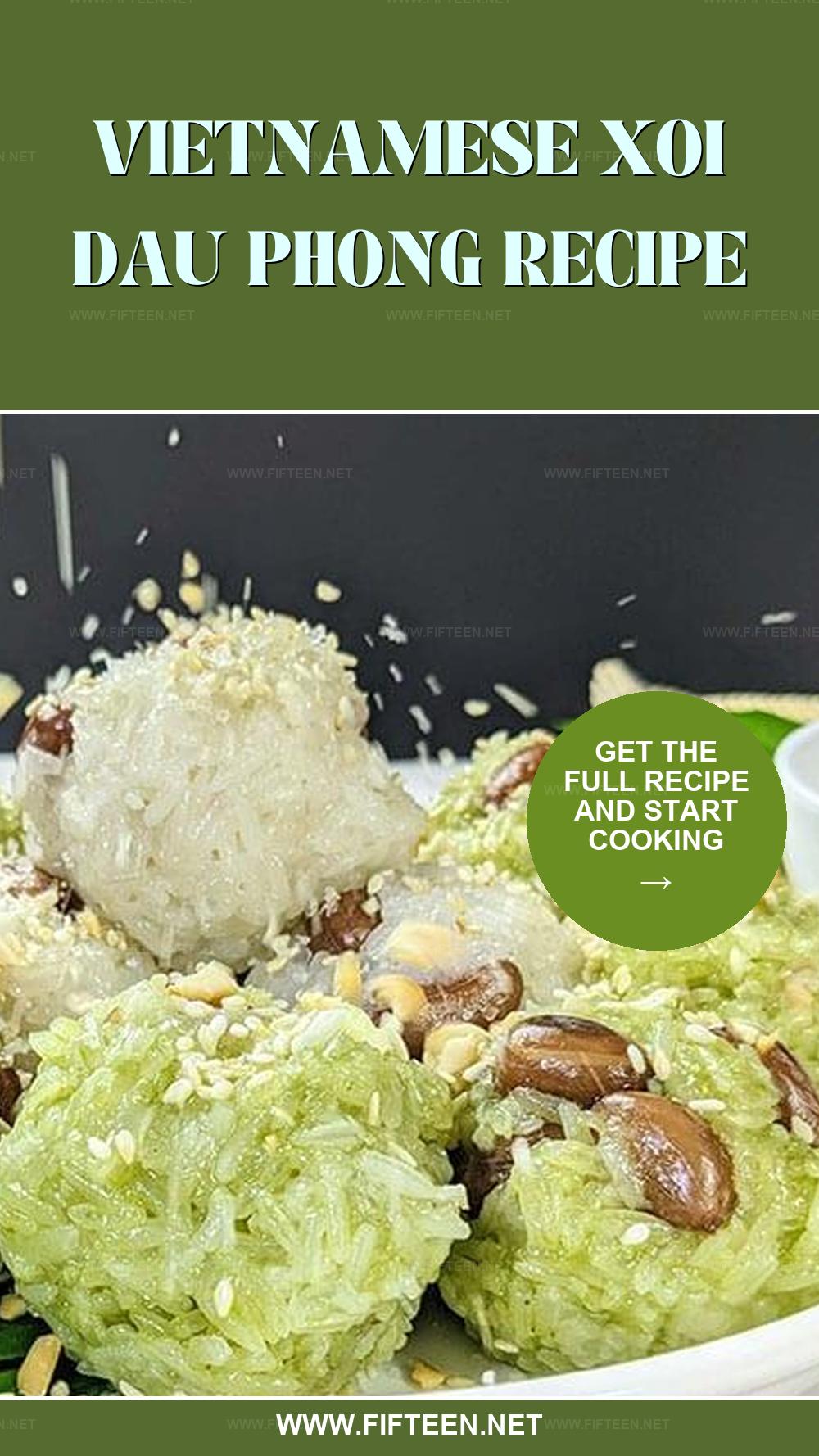
Tien – Alden
Content Writer
Expertise
Home Cooking, Recipe Development, Food Editor, Beverage Editor, Cooking-video Maker, Asian Food Content Creator
Education
Saigon Tourism College
Advanced Culinary Workshop, Beijing
Vietnamese Traditional Cooking School
American College of Vietnam
Alden is a skilled chef with expertise in Asian cuisines, known for blending traditional Vietnamese and Chinese cooking with contemporary innovations. Alden’s passion for Asian flavors and her creative approach to both food and beverages inspires fellow chefs and those aspiring to enter the field.